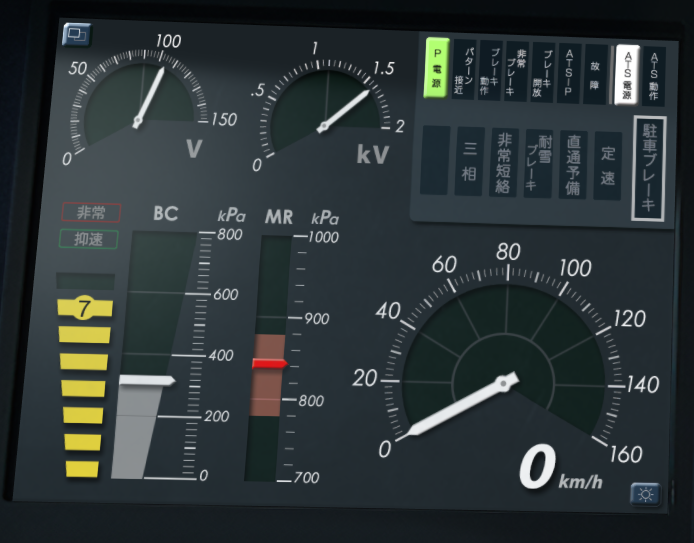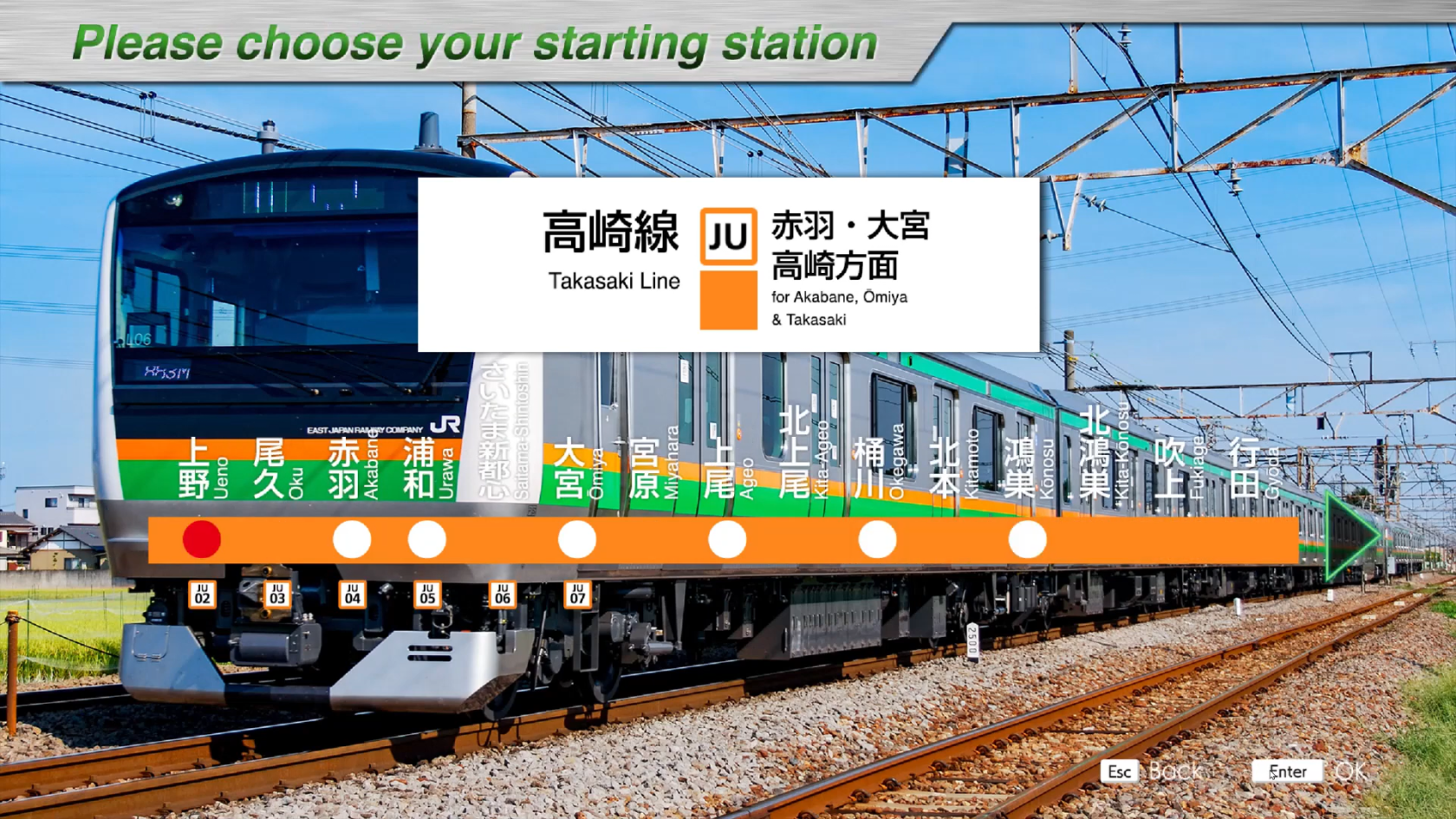Utsunomiya Line
Introducing
The TakasakiUtsunomiya Line is athe 74.7nickname for trains operating on the 163.3 km long linesection connecting Omiya Station in Saitama City, Saitama Prefecture to Takasaki Station in Takasaki City, Gunma Prefecture. This DLC includesof the TohokuTōhoku Main Line section (between Ueno and Omiya stations, for a total length of 101.4 km.
The line has a relatively long history among Japanese railroads, with its predecessor, Nippon Railway Company, starting operations between UenoTōkyō Station and KumagayaMorioka StationStation) between Tōkyō and Kuroiso Station.The Utsunomiya Line nickname has been in 1883.use Thesince followingMarch year,10, in1990, 1884,at the line was extended to Takasaki Station and opened to full service. It was not until later, in 1909, that the line was officially named the "Takasaki Line".
Until the openingsuggestion of the Joetsumunicipalities Shinkansen in 1982,along the Takasakirailway Lineline. wasIn the main transportation link between the Tokyo metropolitan area and the Niigata and Hokuriku regions, withpast, many limited express and sleeper trains operatingto onTōhoku and Hokkaidō used to run, but now Local and rapid trains dominate the line. Currently, most of the long-distance transportation role has been handed over to the parallel Joetsu Shinkansen, and as of 2024, only "Akagi Limited Express" and "Kusatsu-Shima Limited Express" trains regularly operate on the Takasaki Line as limited express trains.timetable.
The Takasakicurrent operation system is separated at Utsunomiya Station. South of Utsunomiya, the Ueno Tōkyō Line hasand beenShōnan Shinjuku Line provide commuter and school transportation in the Tōkyō metropolitan area. On the section north of Utsunomiya (some early mornings are between Oyama/Koganei and Utsunomiya), one-man operation is used asto a keyprovide interregional transportation linewithin forTochigi commutingPrefecture.
After leaving Kuroiso Station, the train heads to workUeno and school, etc. In 2001, the Shonan-Shinjuku Line started service directly to the Tokaido Line via Ikebukuro and Shinjuku Stations, and in 2015, the Ueno-Tokyo Line started service directly to the Tokaido Line via Tokyo and Shinagawa Stations, allowing passengers to travel betweenStation, the northern Kantogateway regionto Tōkyō, and KanagawaTōkyō PrefectureStation, withoutthe changingcenter trains.of TheTōkyō, newvia lineNasu-Shiobara allowsStation, passengersthe gateway to travelNasu, betweenUtsunomiya northernStation, Kantoknown and Kanagawa Prefecture without having to change trains.
Onas the waycity fromof Uenodumplings, Station toand Omiya Station, the linelargest runsterminal parallelin toSaitama thePrefecture.
We hope you will enjoy thisthe Utsunomiya Line DLC as you ridetravel alongthrough the TakasakiKantō LinePlain, atexperiencing speedsthe ofchanging uplandscape from Tochigi Prefecture to 110Tōkyō, km/hincluding whilesprawling gazingrural atlandscapes, suburban residential areas, and buildings in the ever-changingcity scenery.center.
Key data
- Total length :
101.4163.3 km - Number of stations :
2434 - Safety system : ATP-P
- Train model : E233-3000 series (
1010/15 cars) - Max speed: 110 km/h
- Max speed after signals :
- Reduced speed (green/yellow): 75 km/h
- Caution (yellow): 55 km/h
- Speed restriction (yellow/yellow): 25 km/h
- Routes:
UenoKoganei ~KagoharaTōkyō (829M)1539E) :TypeLocal"Local"train -1715 cars - 20 stations -67.988.3 kmUenoUtsunomiya ~TakasakiTōkyō (831M)1567E) :TypeLocal"Local"train - 15 cars - 24 stations -101.4109.5 kmUenoKoganei ~TakasakiTōkyō (3922E)1591E) :TypeLocal"Urban"train -1615 cars - 20 stations -101.488.3 km- Kuroiso ~ Ueno (3520M) : Rapid "Rabbit" train - 10 cars - 24 stations - 159.7 km
- In-train announcements: Yes
- Driver announcement (pointing-and-calling):
NoYes
Console detail
Apart from the pocket watch and the door-closing indicator in the center of the console, there are 2 displays.
 The first screen (train technical info) displays electrical voltages and various indicators at the top.
The first screen (train technical info) displays electrical voltages and various indicators at the top.
The bottom area contains:
- Brake level and indicators for emergency brake in red (非常) and speed limit in green (抑速)
- Brake cylinder pressure (BC)
- Main air reservoir pressure (MR). Note that if this falls below the red zone (780kPa), the compressor starts up.
- Speed dial.
The top line of indicators are those for ATS-P. Here are the translations of the bottom line:
-
3-phases (三相)
-
Emergency short-circuit (非常短絡)
-
Snow resistant brakes (耐雪ブレーキ)
-
Safety Brakes (直通予備)
-
Cruise control (定速)
-
Parking brakes (駐車ブレーキ)
Consult the MON/TIMS/INTEROS screen page for more details about the TIMS screen.
Movie
Useful links
Wikipedia : https://en.wikipedia.org/wiki/Takasaki_LineUtsunomiya_Line
Driver's guide : https://docs.google.com/spreadsheets/d/1W_fwI9TCSBDaODz087IjQDqcmRBpxKWKpl2GivNPtfA/edit#gid=72330075 Soon...
Timetables (in japanese) :
Ueno ~ Kagohara (829M) :https://docs.google.com/spreadsheets/d/1W_fwI9TCSBDaODz087IjQDqcmRBpxKWKpl2GivNPtfA/edit#gid=960964174Ueno ~ Takasaki (831M) :https://docs.google.com/spreadsheets/d/1W_fwI9TCSBDaODz087IjQDqcmRBpxKWKpl2GivNPtfA/edit#gid=1393285047Ueno ~ Takasaki (3922E) :https://docs.google.com/spreadsheets/d/1W_fwI9TCSBDaODz087IjQDqcmRBpxKWKpl2GivNPtfA/edit#gid=1909004233

